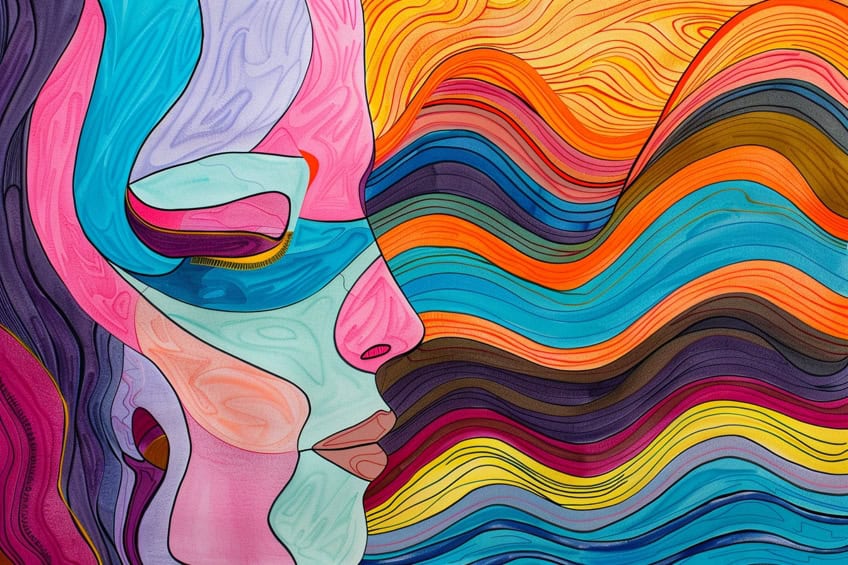Contour Lines in Art – Drawing Boundaries
Contour lines, those elegant and often overlooked elements in art, wield a profound influence on how we perceive form, depth, and movement. They are the silent storytellers, tracing the edges of objects with precision, guiding our eyes through the artist’s visual narrative. From the delicate curves of a figure to the rugged terrain of a landscape, contour lines breathe life into two-dimensional spaces, revealing the artist’s mastery of composition and design. In this article, we delve into the fascinating world of contour lines, exploring their significance, techniques, and impact across various artistic styles and periods.
Table of Contents
- 1 Key Takeaways
- 2 What Are Contour Lines in Art?
- 3 Fundamentals of Contour Lines
- 4 Materials and Tools for Contour Drawing
- 5 Techniques and Practice
- 6 Expression and Creativity in Contour Drawing
- 7 Frequently Asked Questions
- 7.1 How Can Contour Lines Be Used to Convey Depth and Form in Art?
- 7.2 What Are the Various Techniques for Creating Cross-Contour Lines in Drawings?
- 7.3 In What Ways Can the Style of Contour Lines Affect the Interpretation of an Artwork?
- 7.4 What Role Do Contour Lines Play in the Depiction of Light and Shadow in Artworks?
Key Takeaways
- Contour lines outline the edges of objects to define their shape.
- Various techniques of contour line art enhance the perception of depth.
- Contour drawing is fundamental for developing observation and precision in art.
What Are Contour Lines in Art?
Contour lines in art are powerful tools that can define shapes and spaces with simplicity and clarity. They are the lines used to outline the visible edges of an object, capturing its form and dimension without the addition of shading or texture. This method emphasizes the purity of an object’s shape, compelling the artist to concentrate on the essential aspects that characterize its form. The strength of contour line art lies in its ability to communicate volume, space, and the artist’s own hand with just the outline of the subject.

The use of contour lines can vary greatly, from single continuous lines that capture the essence of a subject in one unbroken movement to more complex compositions involving cross-contour lines, which traverse the object’s surface and describe its three-dimensional form. These lines serve to suggest depth and structure, enabling the viewer to perceive the fullness of the depicted form. Contour drawing is foundational in the realm of art education, teaching artists to observe and translate what they see into distilled, precise representations. It fosters a deepened awareness of shape and proportion and is an essential skill for any artist, encouraging a confident and deliberate approach to drawing. Characteristics of contour lines include:
- Continuous: Typically, a contour line is drawn in a continuous fashion, without lifting the drawing instrument from the paper.
- Varied: The weight and darkness of the line may vary to represent changes in the object’s surface or to emphasize specific features more strongly.
- Observational: Effective contour drawing relies heavily on careful observation, with the artist frequently looking at the subject to achieve accuracy in proportion and perspective.
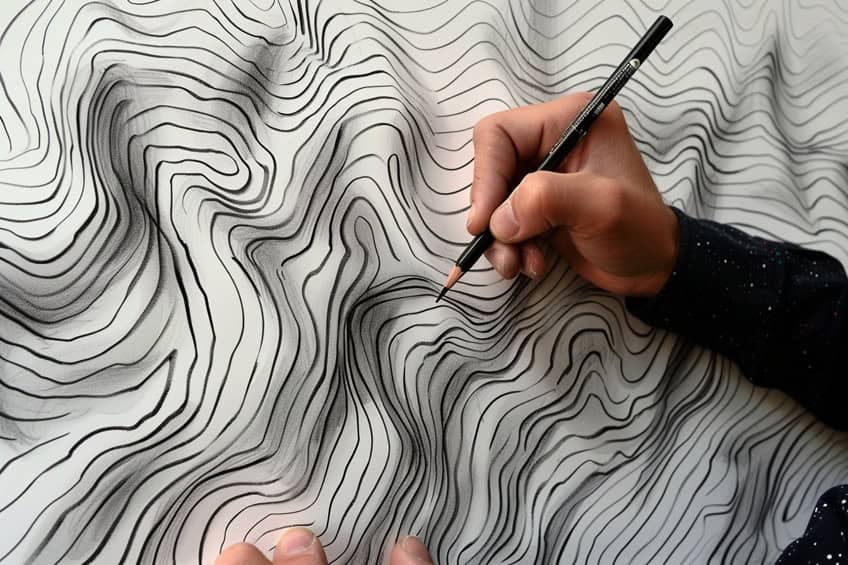
An artist employs contour lines to communicate essential aspects such as shape, form, and solidity. Moreover, artists often utilize this technique to train their hand-eye coordination, ensuring that their depictions are as true to the subject as possible.
It stands as a crucial practice for beginners, teaching the disciplines of observation and precision in drawing.
Fundamentals of Contour Lines
Contour lines are essential for artists to convey form and structure in their drawings, offering depth and perspective through mere outlines.
Understanding Contour Lines
The essence of a contour line lies in its ability to represent the edges and boundaries of a subject in an artwork. Any artist utilizes contour lines as a fundamental technique to translate three-dimensional objects into two-dimensional marks on paper, establishing the form of the subject with as much accuracy as possible. In practice, they are the visible borders we perceive, outlining shapes and separating them from the surrounding space.
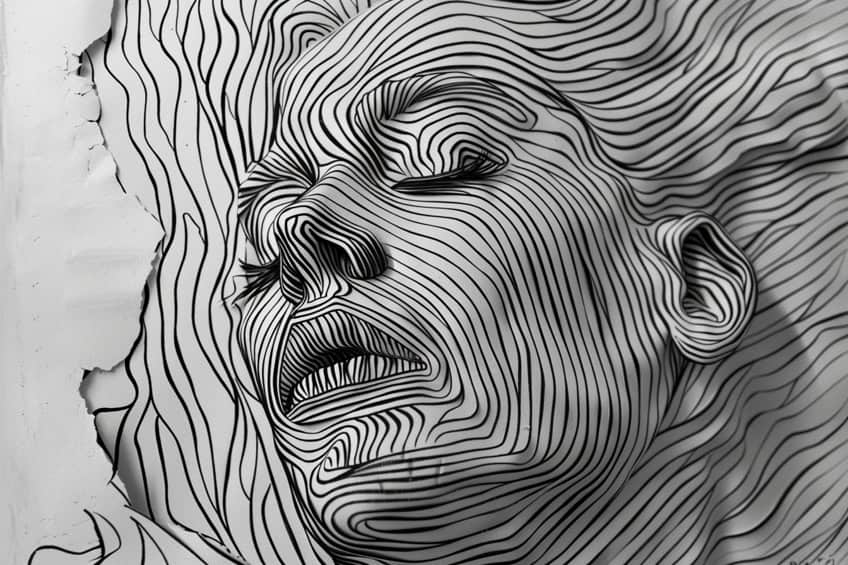
Types of Contour Lines
There are several types of contour lines, each serving a unique purpose in art:
- Blind contour drawing: This technique requires the artist to draw the contour of a subject without looking at the paper. This practice sharpens observational skills and captures the form in a more raw and intuitive manner.
- Contour line drawing: These drawings focus on the outline of the subject alone, often excluding interior detail, to emphasize its shape. They are the building blocks of an artwork, upon which detail and depth can be added later.
- Continuous line drawing: An artist draws a continuous contour line without lifting the pen or pencil from the paper. This method creates a fluid and unbroken outline that captures the subject’s form.
- Cross-contour: These lines move across the form of the subject, suggesting the three-dimensional aspect of the object. Through cross-contour lines, the artist can convey the depth and volume of the subject, giving a more realistic perspective.
Materials and Tools for Contour Drawing
In contour drawing, the quality of the finished piece significantly depends on the choice of materials and tools. Artists need to select items that best capture the continuous flow of lines that define this style.

Choosing the Right Drawing Tools
When engaging in contour line drawing, one must carefully consider their drawing tools. Pencils are favored for their precision and range of hardness levels. Soft pencils (B-6B) often produce richer, darker lines, while harder pencils (H-4H) offer lighter, more delicate strokes. Ink pens, including fine-liners, can deliver a distinct, unvarying line, making them a popular choice for continuous contour drawings, where lines are unbroken.
For a more expressive line quality, artists may opt for markers or charcoal, each allowing for varied line weights and textures.
- Pencils (soft and hard grades)
- Ink pens (fine-liners recommended)
- Markers (assorted thicknesses)
- Charcoal sticks
Selecting Paper and Surfaces
The surface an artist draws on can influence the outcome of a contour drawing. Smooth paper allows for precise and clean lines, beneficial when detail and clean edges are desired. Conversely, textured paper is preferred for charcoals or if one seeks to introduce an element of roughness or variability in line quality. While paper is the most common surface, some artists might choose canvas when working with ink or charcoal to create larger, bolder contour lines.

- Smooth paper (ideal for pencils and ink)
- Textured paper (suitable for charcoal)
- Canvas (for large format and bold lines)
Select materials that are well-suited for the line qualities desired in contour drawings to enhance an artist’s capacity to convey their vision effectively.
Techniques and Practice
In mastering the art of contour line drawing, an artist must train their hand-eye coordination and observational skills through dedicated practice. Attention to detail and an understanding of texture, shading, and line quality are vital.
Mastering Contour Drawing Techniques
Contour drawing is a skill that benefits from an artist’s ability to observe and focus on their subject. The basics involve two main types:
- Continuous line contour: This technique involves drawing the subject with a single, unbroken line, without lifting the pencil from the paper. It enhances the artist’s ability to see and capture the relationships within the form.
- Blind contour line drawing: During this exercise, the artist doesn’t look at the paper but rather closely observes the subject. This practice strengthens hand-eye coordination and intensifies the artist’s focus.

Artists should also be familiar with cross-contour lines, which run across the form. These lines help in adding dimension to the drawing and implying texture.
Developing Drawing Skills
Practice and learning are foundational for any developing technique, including contour line drawings. Structured drawing exercises are recommended:
- Observational skills: Start by sketching simple objects, concentrating on their outline and major internal lines.
- Detail and texture: Progress to more complex structures, paying attention to the subtleties of texture and the variation in line weight.
- Shading: Practice shading with contour lines to represent the changes in light and dark across the form.
Training sessions should include a variety of subjects and scales, from small still life to larger, more complex scenes. Over time, an artist’s line drawings should reflect a more precise representation of contour and dimension.
Expression and Creativity in Contour Drawing
Contour drawing is not merely about replicating what an artist sees; it’s an expressive practice that can convey the intricacies of volume and space while adding value and dimension to create the impression of a three-dimensional object.
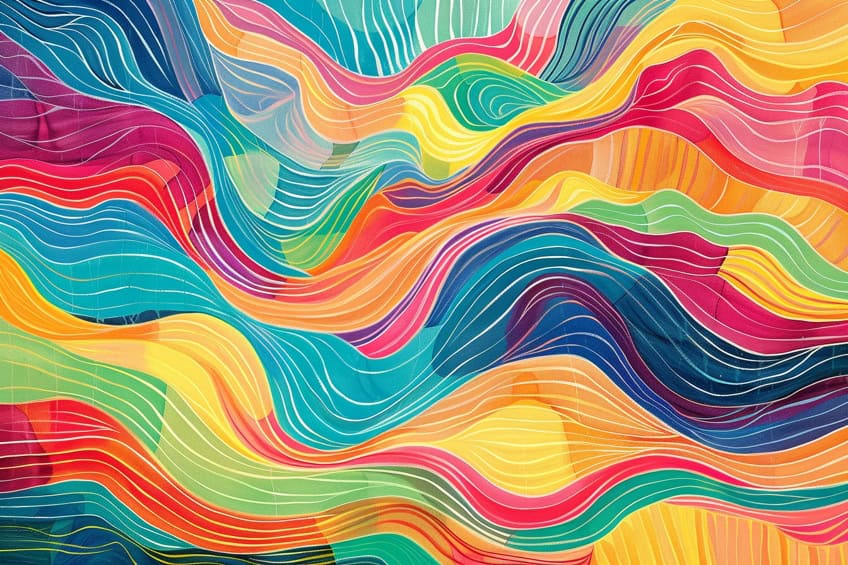
Conveying Volume and Space
Artists use contour lines to define the edges and curves of forms, thereby expressing volume and space. The lines serve as the boundaries of shapes, suggesting the way forms sit in space. The technique of blind contour drawing, where the artist avoids looking at the paper while drawing the subject, enhances the understanding of the composition and strengthens hand-eye communication.
- Line: Careful observation of a subject’s edges leads to lines that suggest three-dimensionality.
- Outline: Acts as a simplistic boundary defining the silhouette of the artwork.
- Silhouette: Reduces complex forms to simple shapes, making it easier to understand space.
By focusing on these aspects, an artist can suggest volume and the illusion of a three-dimensional object within a two-dimensional medium.
Adding Value and Dimension
Adding value to contour drawings introduces depth and further accentuates dimension. Value shifts, achieved through varied line weight or additional shading within a contour drawing, help in translating the effect of light on a surface. These subtleties create a more compelling and expressive artwork.
- Detailed drawings: While detailed drawings often begin with an outline, integrating value changes is what brings them to life.
- Depth: Achieved through the use of line variance and shading to give the impression of a form receding or advancing in space.
Artists can employ these techniques to make their artworks more dynamic and rich with expression, exceeding the simplicity of contour lines to reveal a more intricate interplay of light and shadow.
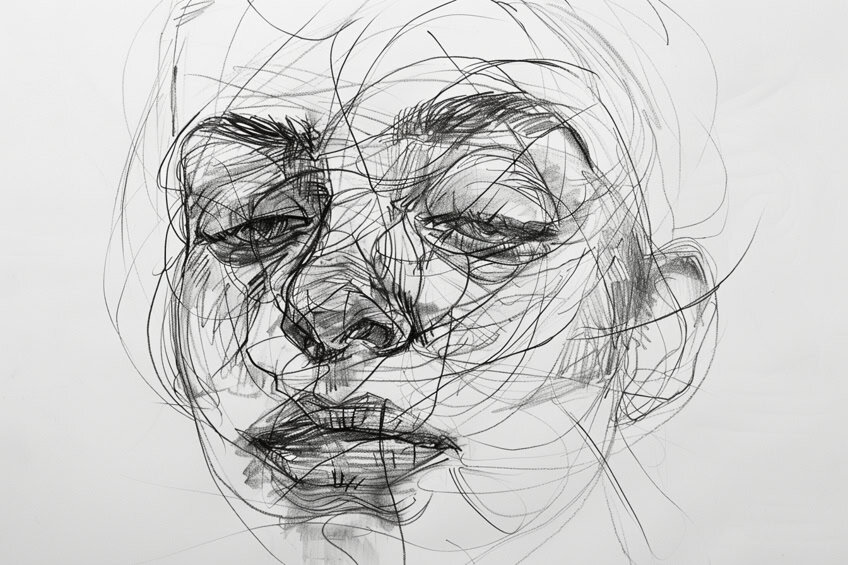
Contour lines serve as the invisible threads that bind artistic expression with perception. They transcend mere outlines, becoming conduits of emotion, rhythm, and structure within a work of art. Whether subtly guiding our gaze or boldly defining shapes, contour lines are integral to the language of visual storytelling. As we unravel the intricacies of contour lines in art, we gain a deeper appreciation for the meticulous craftsmanship and thoughtful intent behind every stroke. They remind us that even in the realm of lines and edges, there exists a world of boundless creativity and endless possibilities.
Frequently Asked Questions
How Can Contour Lines Be Used to Convey Depth and Form in Art?
Contour lines map out the visible edges of a shape and follow the form of the object, suggesting volume. Artists vary line weight, add breaks in the line, or use overlapping contours to imply depth and dimensionality.
What Are the Various Techniques for Creating Cross-Contour Lines in Drawings?
Cross-contour lines wrap around an object, like the latitude and longitude lines on a globe. Techniques may involve hatching and cross-hatching with the lines following the form’s curvature, or using continuous line drawing to express the surface variations.
In What Ways Can the Style of Contour Lines Affect the Interpretation of an Artwork?
The style of contour lines — whether smooth, jagged, thin, or thick — can convey different emotions and energy levels. Fine, delicate lines might suggest fragility, while bold, irregular lines can give a sense of dynamism or tension.
What Role Do Contour Lines Play in the Depiction of Light and Shadow in Artworks?
Contour lines do not typically depict light and shadow directly but outline forms that light and shadow may reveal. The perception of light is sometimes suggested through the density and spacing of cross-contour lines, implying the way light falls on an object.
Isabella studied at the University of Cape Town in South Africa and graduated with a Bachelor of Arts majoring in English Literature & Language and Psychology. Throughout her undergraduate years, she took Art History as an additional subject and absolutely loved it. Building on from her art history knowledge that began in high school, art has always been a particular area of fascination for her. From learning about artworks previously unknown to her, or sharpening her existing understanding of specific works, the ability to continue learning within this interesting sphere excites her greatly.
Her focal points of interest in art history encompass profiling specific artists and art movements, as it is these areas where she is able to really dig deep into the rich narrative of the art world. Additionally, she particularly enjoys exploring the different artistic styles of the 20th century, as well as the important impact that female artists have had on the development of art history.
Learn more about Isabella Meyer and the Art in Context Team.
Cite this Article
Isabella, Meyer, “Contour Lines in Art – Drawing Boundaries.” Art in Context. April 22, 2024. URL: https://artincontext.org/contour-lines-in-art/
Meyer, I. (2024, 22 April). Contour Lines in Art – Drawing Boundaries. Art in Context. https://artincontext.org/contour-lines-in-art/
Meyer, Isabella. “Contour Lines in Art – Drawing Boundaries.” Art in Context, April 22, 2024. https://artincontext.org/contour-lines-in-art/.


